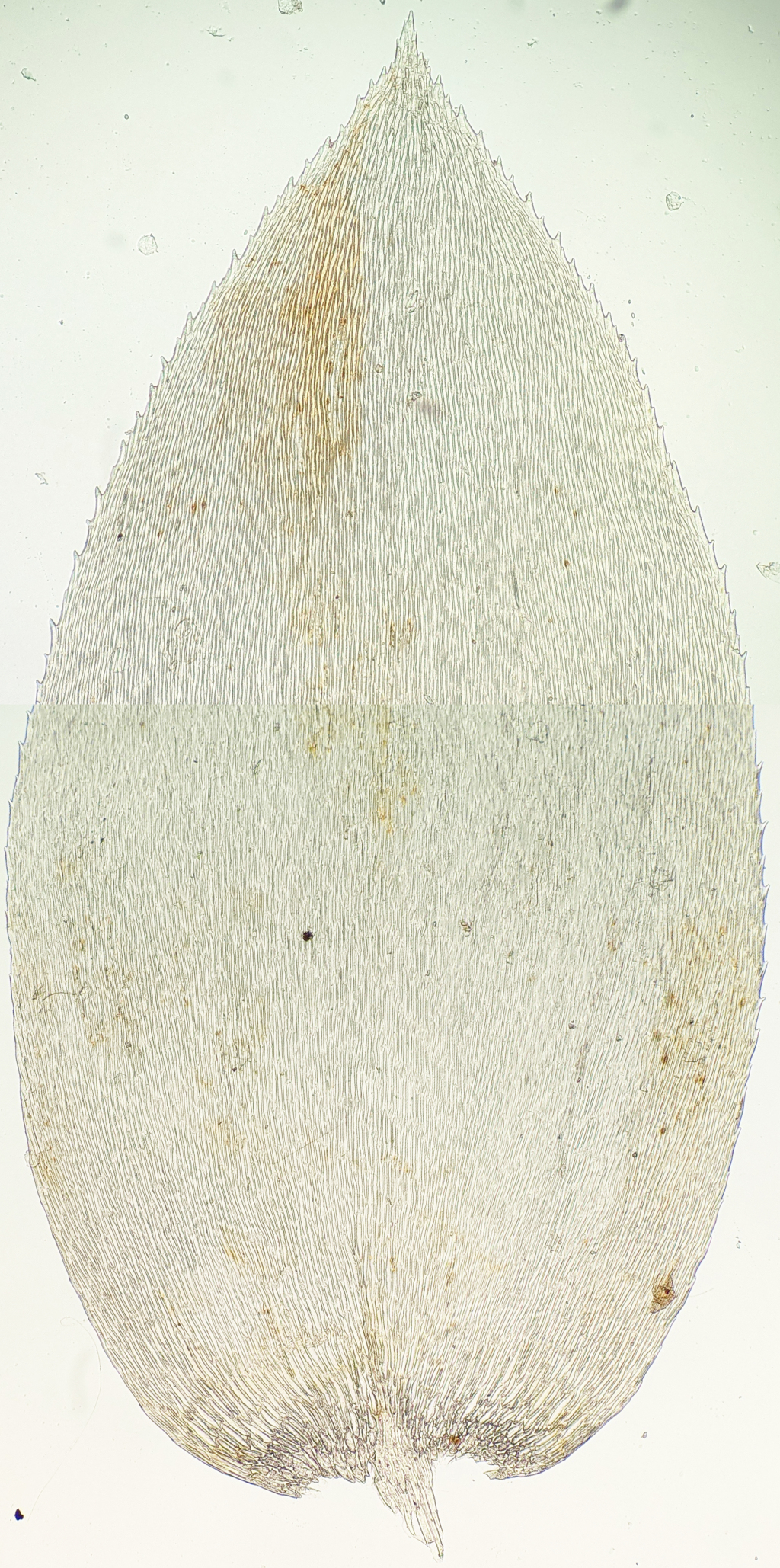Trachylomataceae
Dioicous, male and female plants of similar size. Asexual reproduction by filamentous gemmae produced at the ends of branches. Loose tufts or scattered on trees, rarely on logs. Secondary stems arising from creeping primary stoloniform stems; primary stem densely covered in rhizoids; secondary stems projecting parallel to ground in a single plane, differentiated into a basal unbranched stipe section and a pinnately, bipinnately or rarely tripinnately (not in Victoria) branched frond section; central strand conspicuous; paraphyllia absent; pseudoparaphyllia narrowly lanceolate. Leaves complanate, branch leaves smaller than stem leaves; apices acute to acuminate, rarely obtuse (not in Victoria); costae usually single, sometimes double, sometimes absent, extending to ½ leaf length; margins serrulate toward apex, entire toward base, without a border; cells linear to rhombic, smooth; alar cells scarcely differentiated. Pleurocarpous. Capsules exserted, erect or suberect, operculate. Calyptrae cucullate, smooth, glabrous or pilose (not in Victoria). Operculum rostrate. Peristome double; exostome of 16 entire teeth; endostome of 16 segments alternating with teeth, without cilia.
One genus, Trachyloma, which occurs in India, south-east Asia, Taiwan, Malesia through to New Zealand, the Society Islands and Hawaii and is composed of five species; 1 species in Victoria.
 Spinning
SpinningMiller, N.G.; Manuel M.G. (1982). Trachyloma (Bryophytina, Pterobryaceae): A taxonomic monograph. Journal of the Hattori Botanical Laboratory 51: 273–321.
